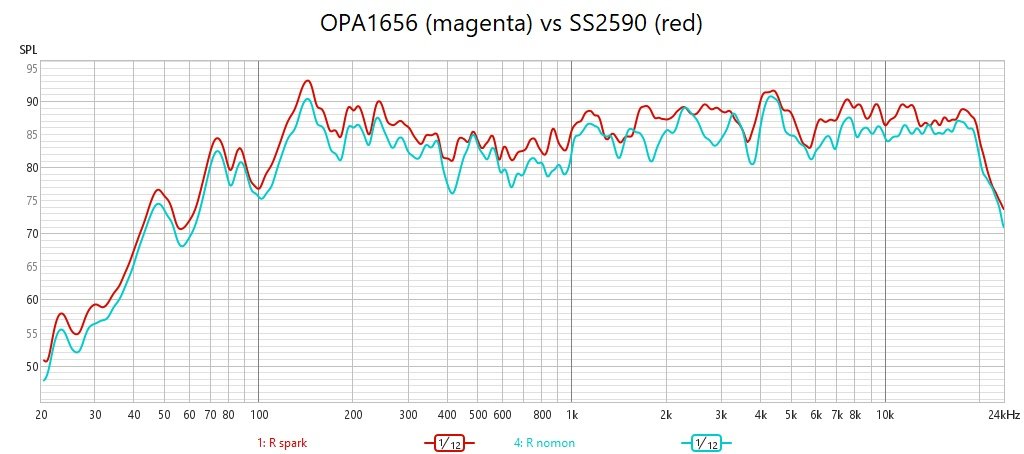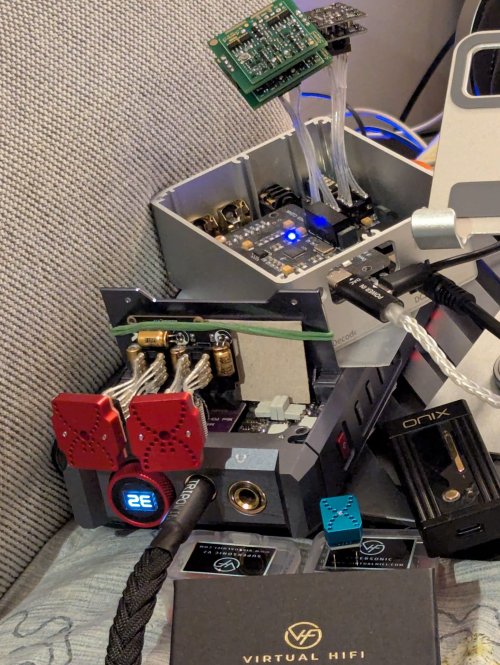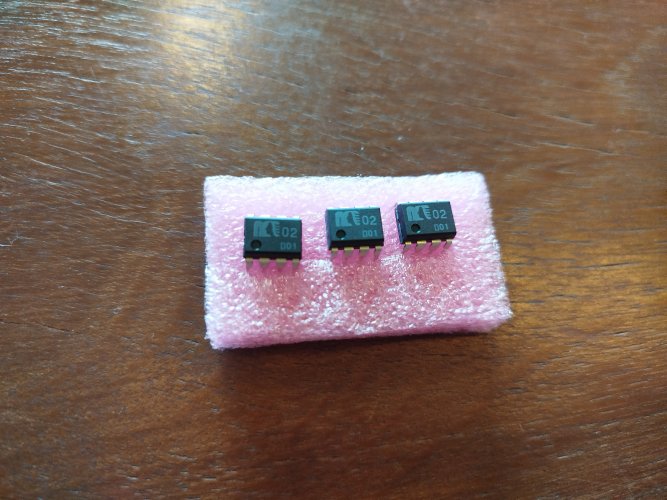Charminbaer
New Head-Fier
- Joined
- Sep 13, 2010
- Posts
- 31
- Likes
- 0
Quote:
The pinouts for the 8 pin package are on the front page of the AD797 datasheet. They are the same for DIP and SOIC. Pins 4 and 7 are the power inputs. There is no pin for ground - you will have to find the nearest ground (zero volts) point on the circuitboard.
I suggest starting with the power supply decoupling which are the 2 pairs of 4.7uf Tantalum and a 0.1uf ceramic capacitors in parallel that you mentioned from the datasheet. That may be enough. Otherwise, the capacitor from pin 2 to pin 6 will be for bandwidth limiting in the feedback loop.
This can be more difficult if you are using chip adapters, as the bypassing components should be as close to the chip as possible. Some adapters have facility to mount bypassing caps on board. I like to solder the bypass caps to the underside of the PCB beneath the op-amp socket, directly from the socket pin to the ground point.
Some design techniques work for all op-amps in general (e.g. power supply bypassing), while others are specific requirements of individual chip designs. Pin 8 on the AD797 is one such individual feature which is outlined in the datasheet. The LT1028 has pin 5 for tuning.
No i didnt mean that. What i wanted to know is if i can solder the 2 bypass caps from pin 8 and pin 4 of the dual socket to ground. I dont want to kill the opamp during soldering, therefore i would prefer soldering on a replaceable socket. Will i need other caps in that case , since im bypassing 2 opamps instead of just one directly? I would not like to solder to the board directly if possible.
The Datasheet says the benefits of Pin8(single Soic) are mainly for high gain or and/or high frequencies : "Use of this feature improves distortion performance when the closed-loop gain is more than 10 or when frequencies of interest are greater than 30 kHz."
Would it bring me any benefit if i would like to use my amp with lower or equal gain?
Quote:
qusp said:
If i look at the layout of the "2xSoic to 1xDip Adapter" i can see no grounding. Isn´t there another way to get to ground without soldering directly to the board?
So many Questions.

Thanks to you guys for helping me ,I hope i m not using up too much of your time.





























